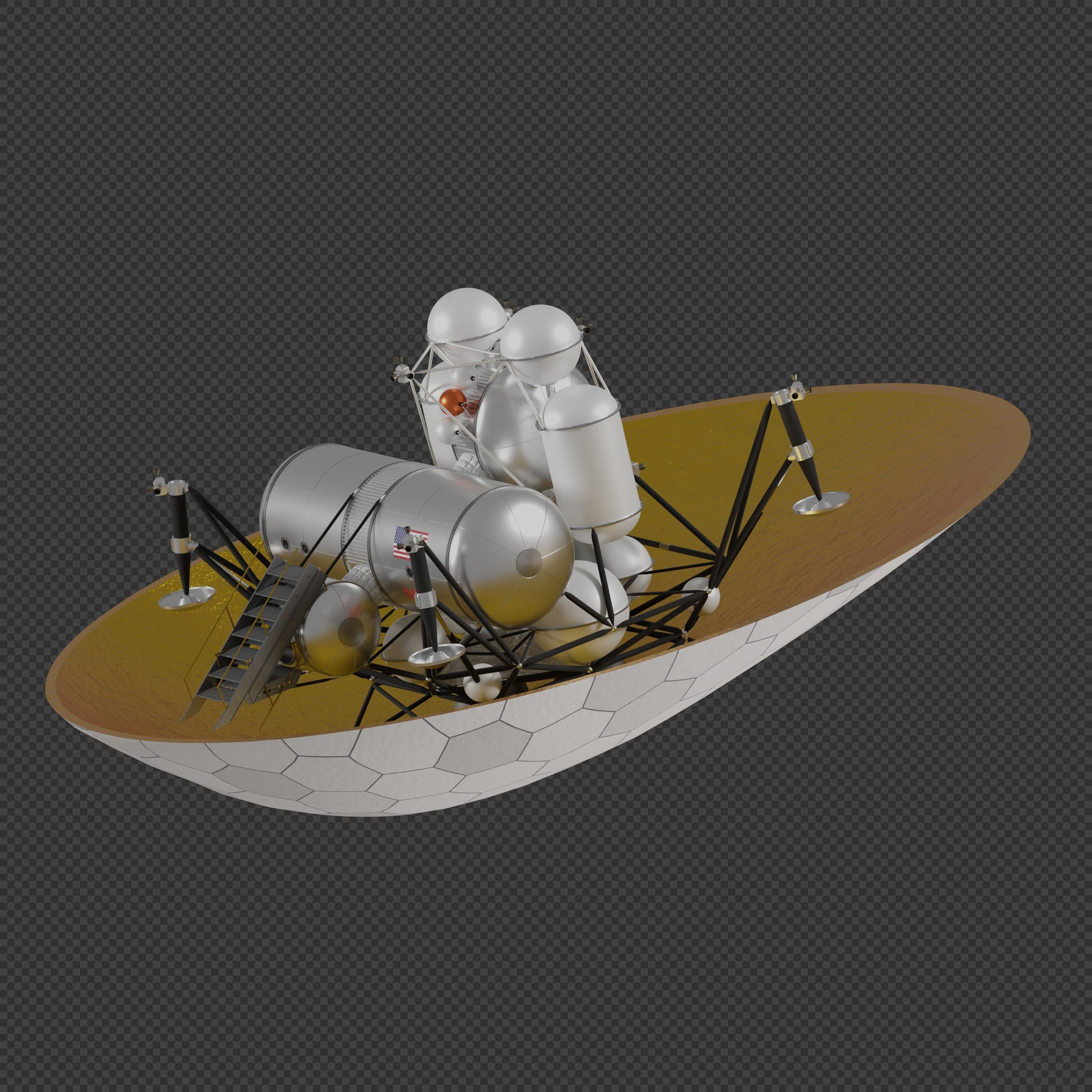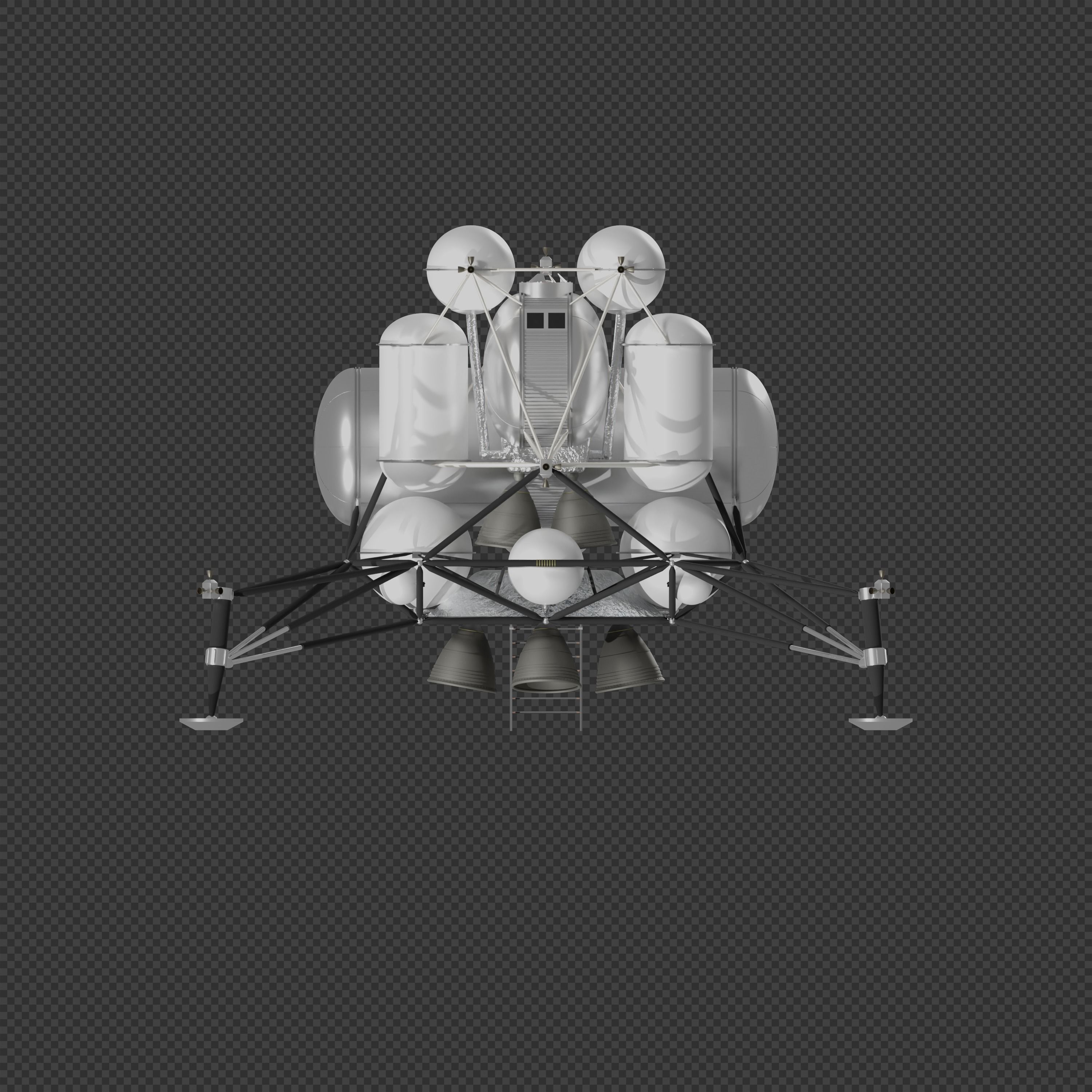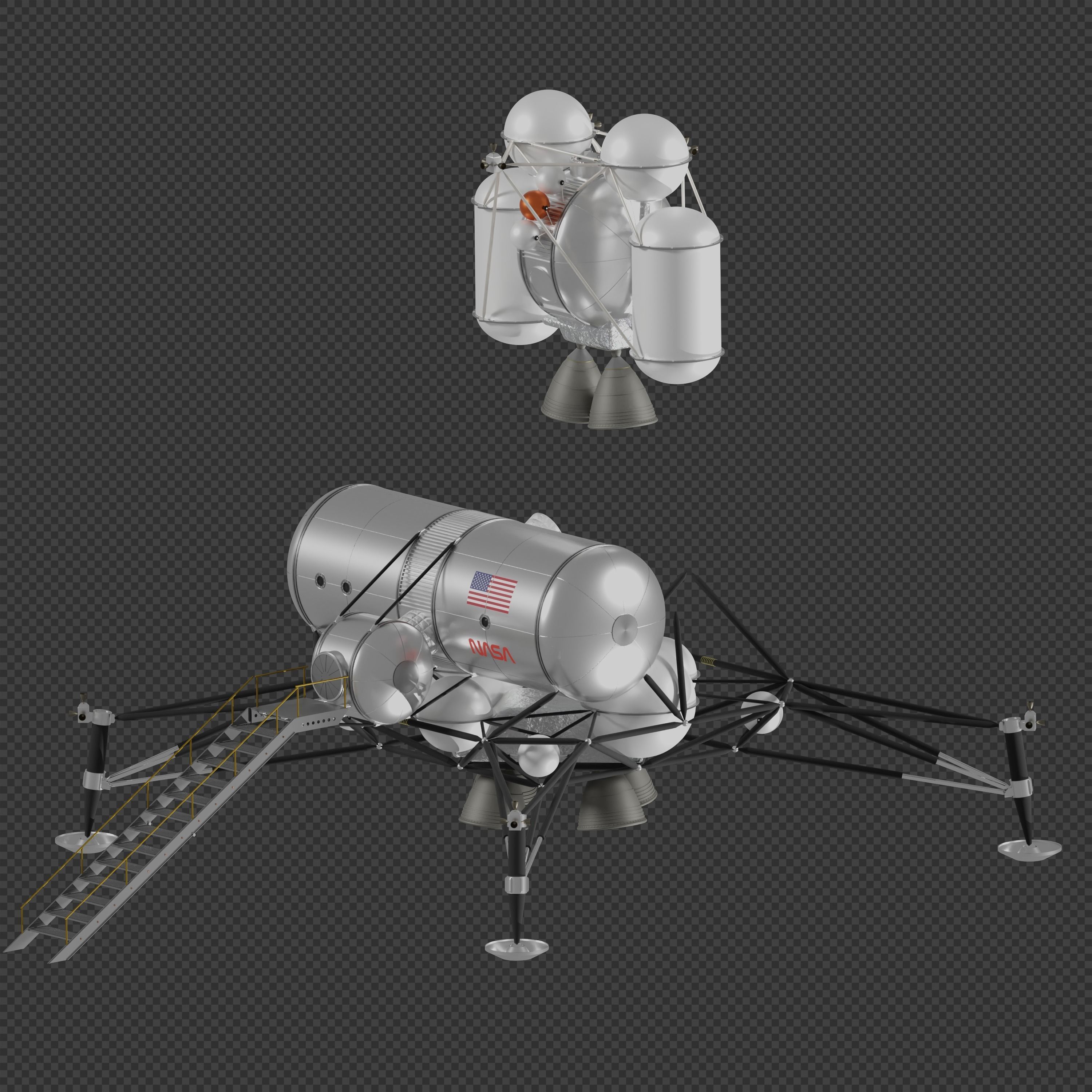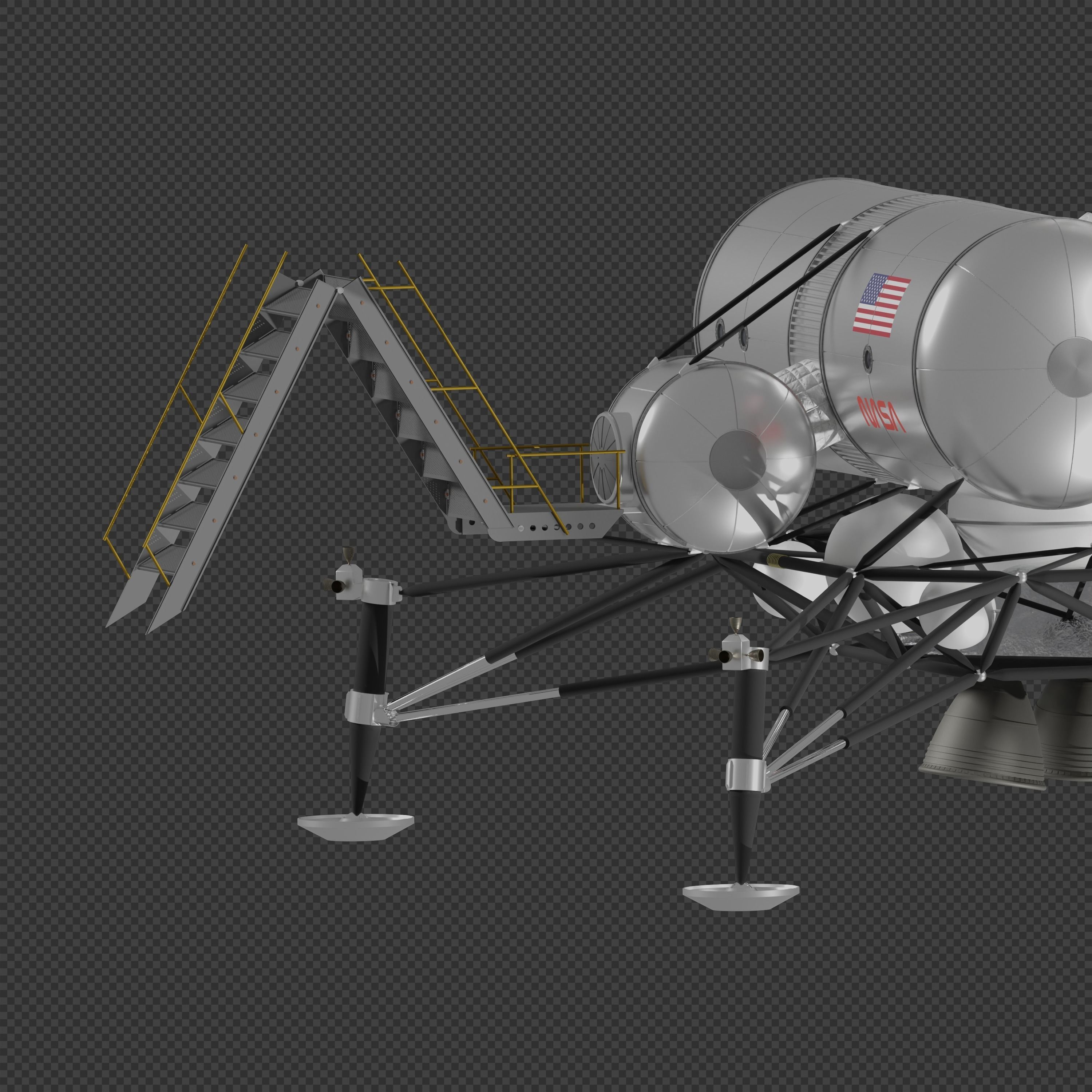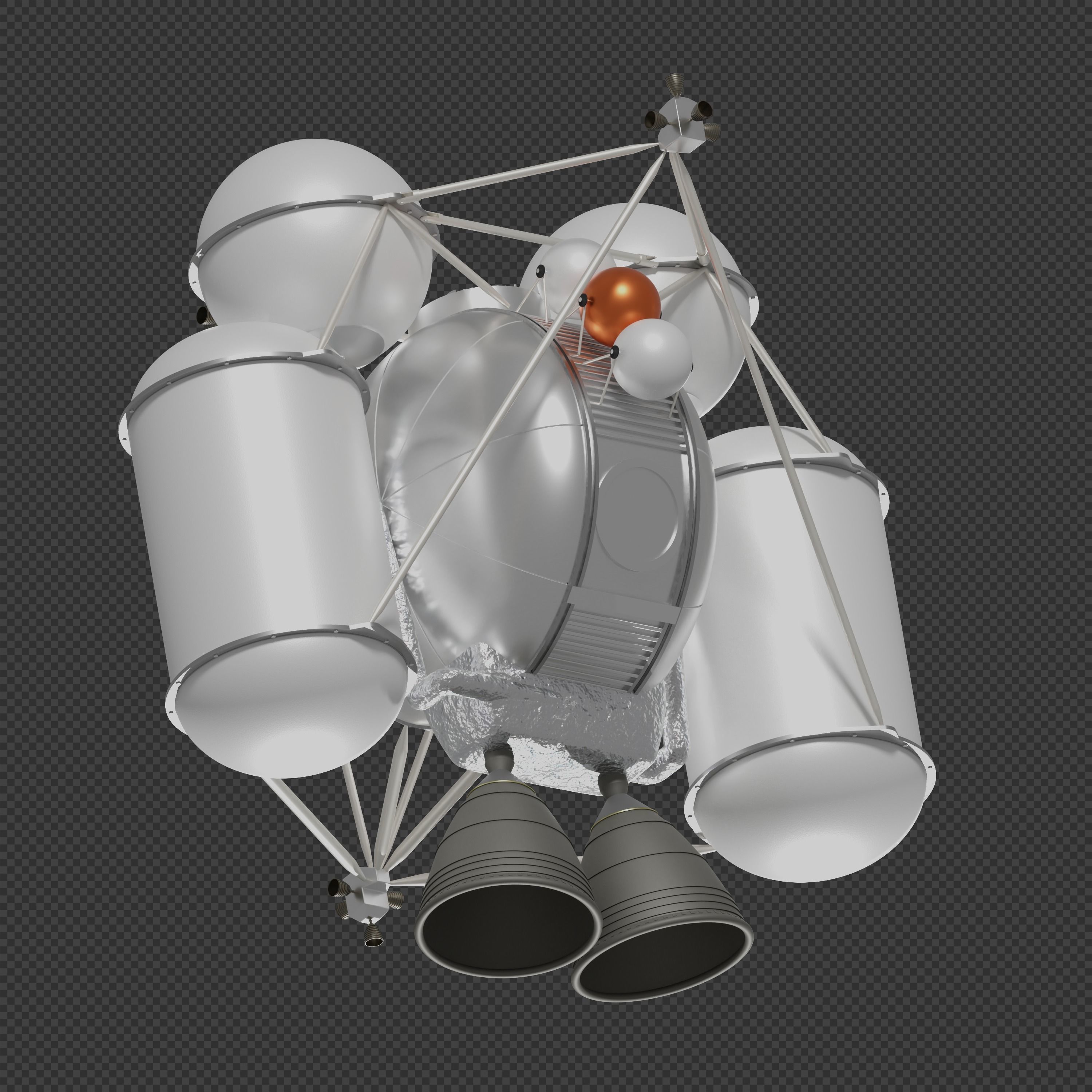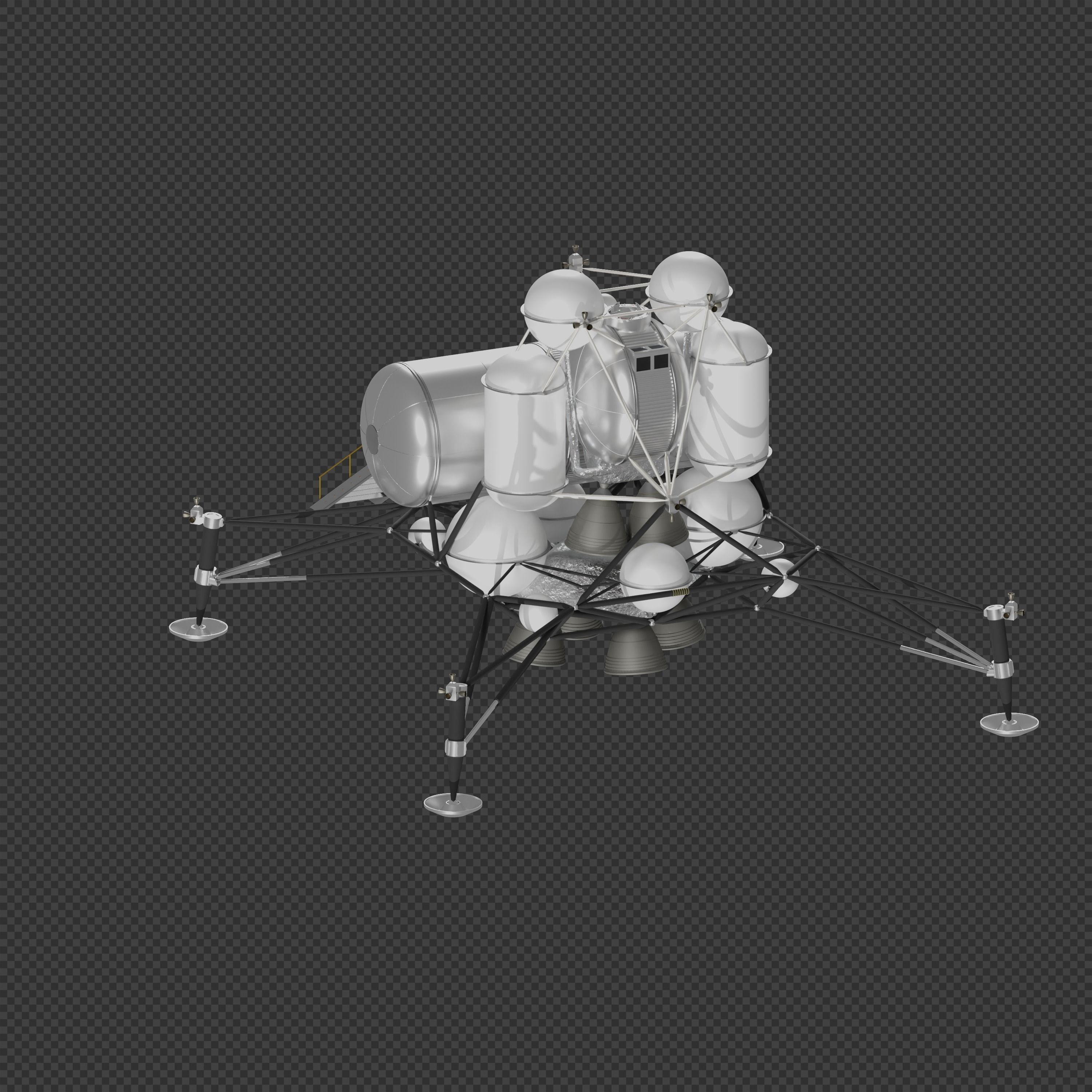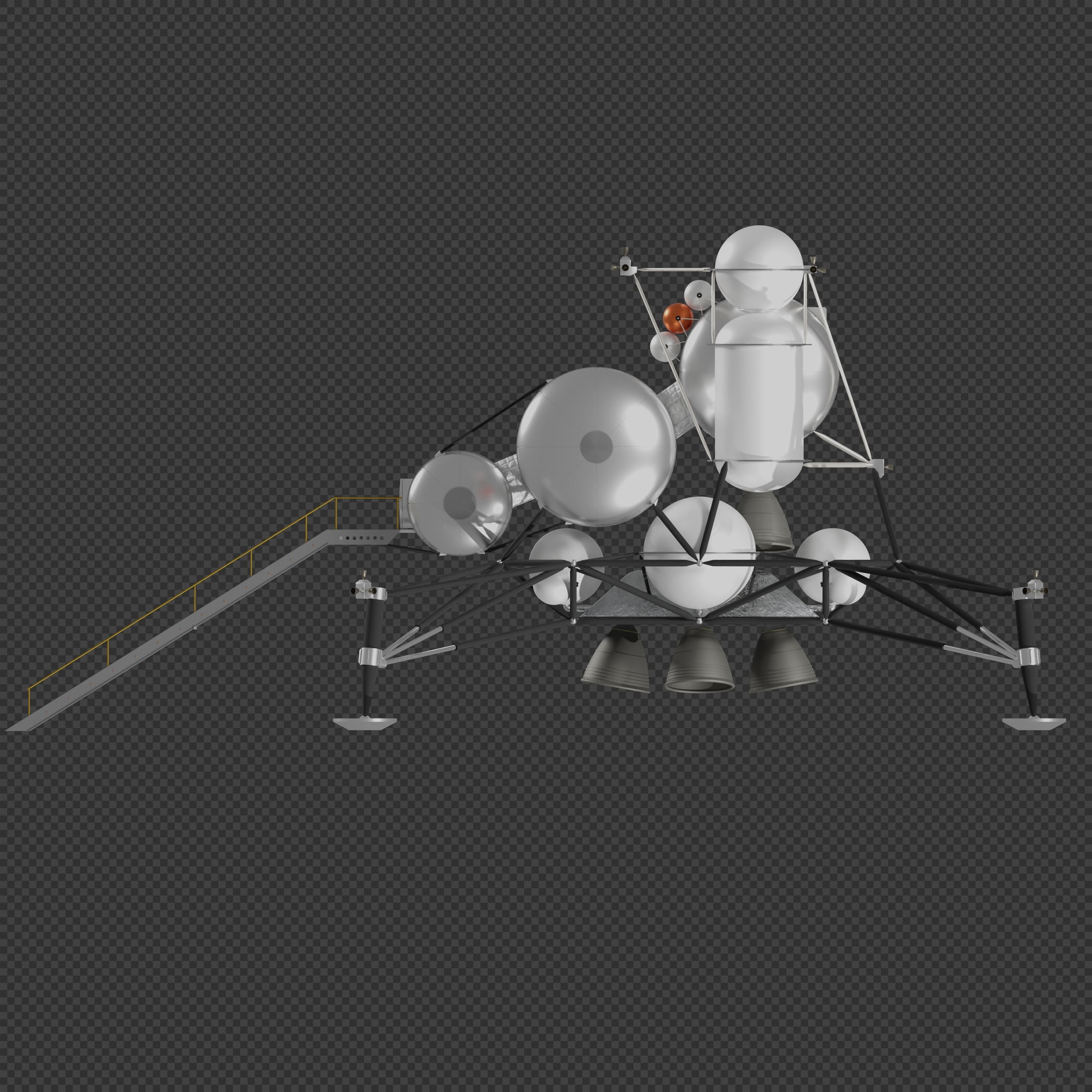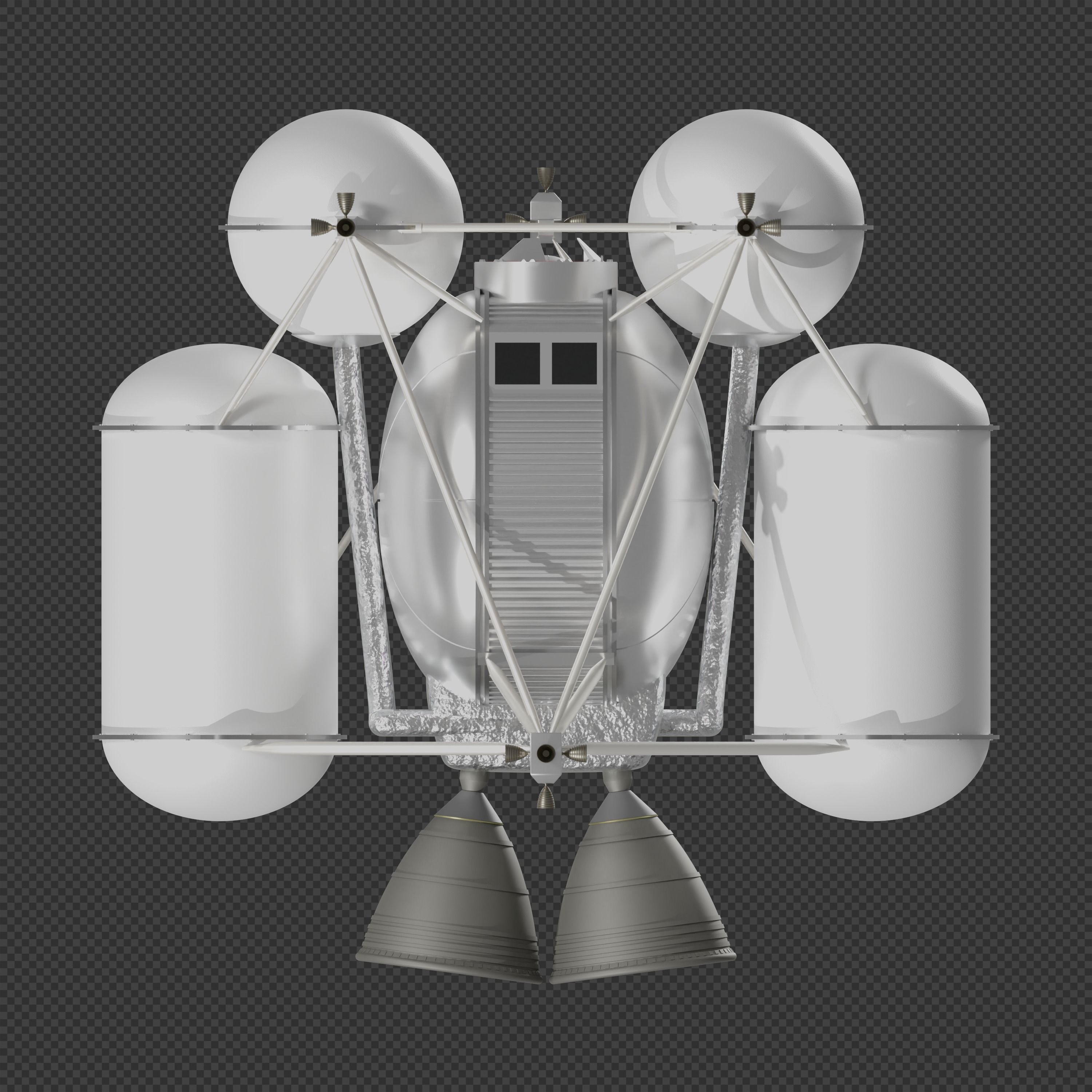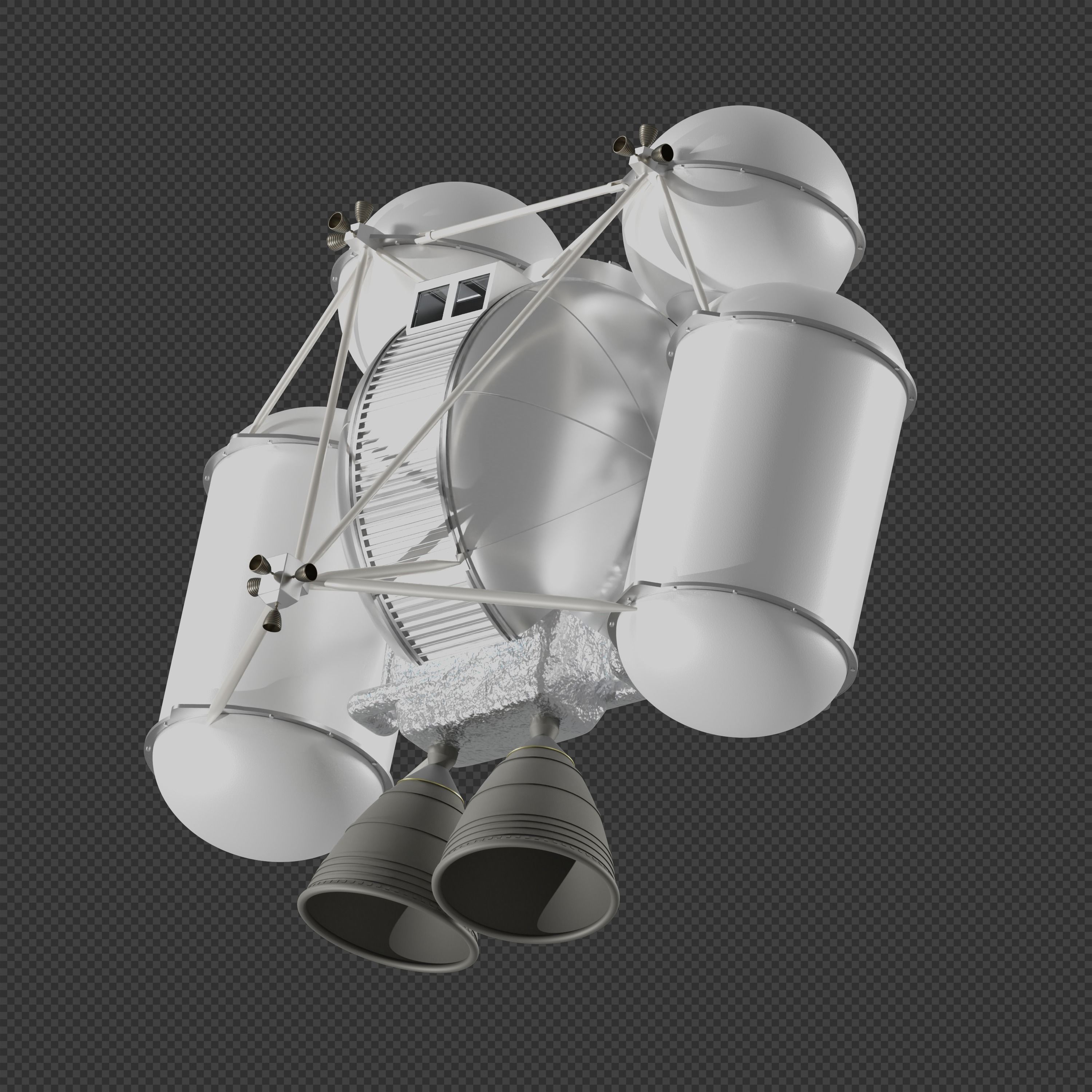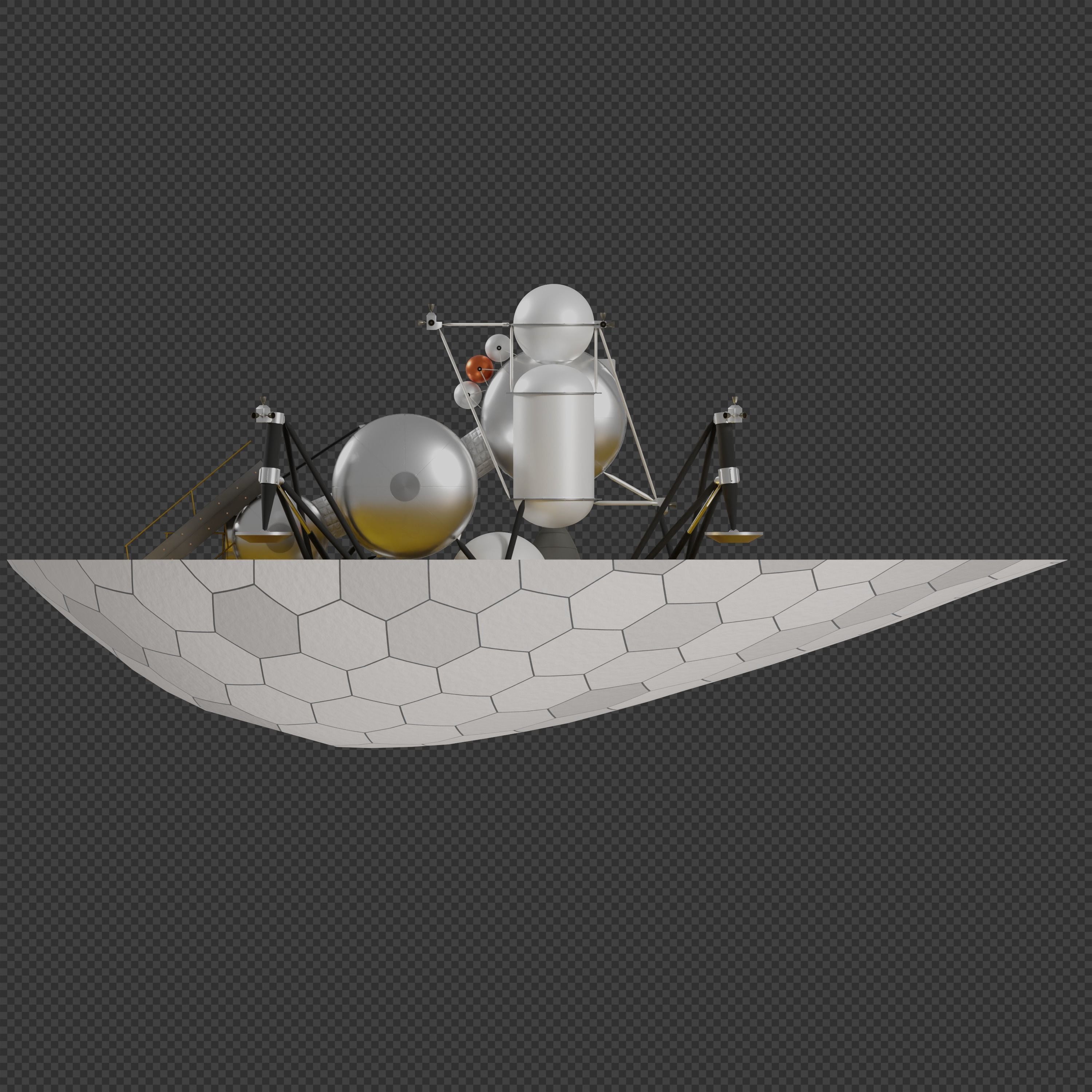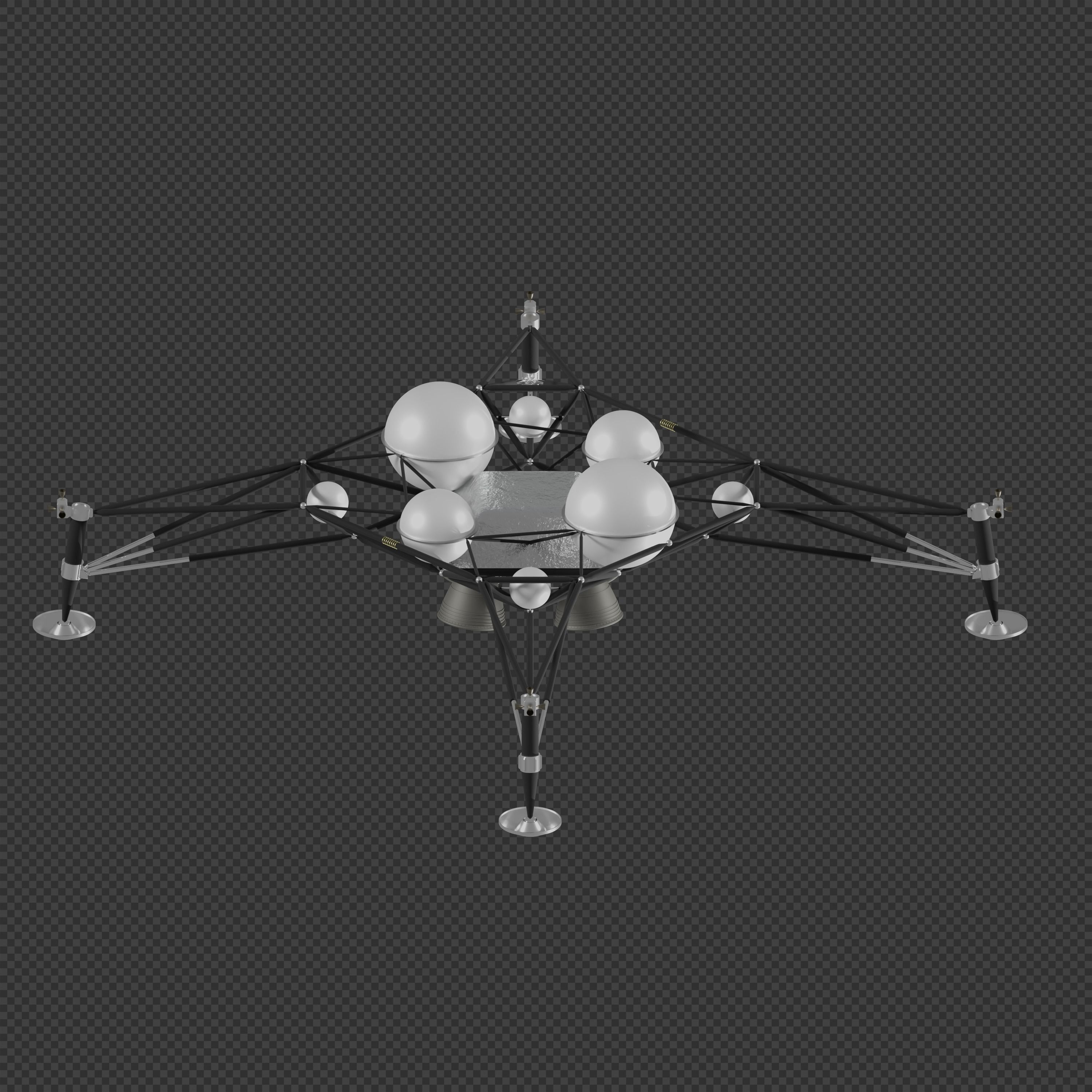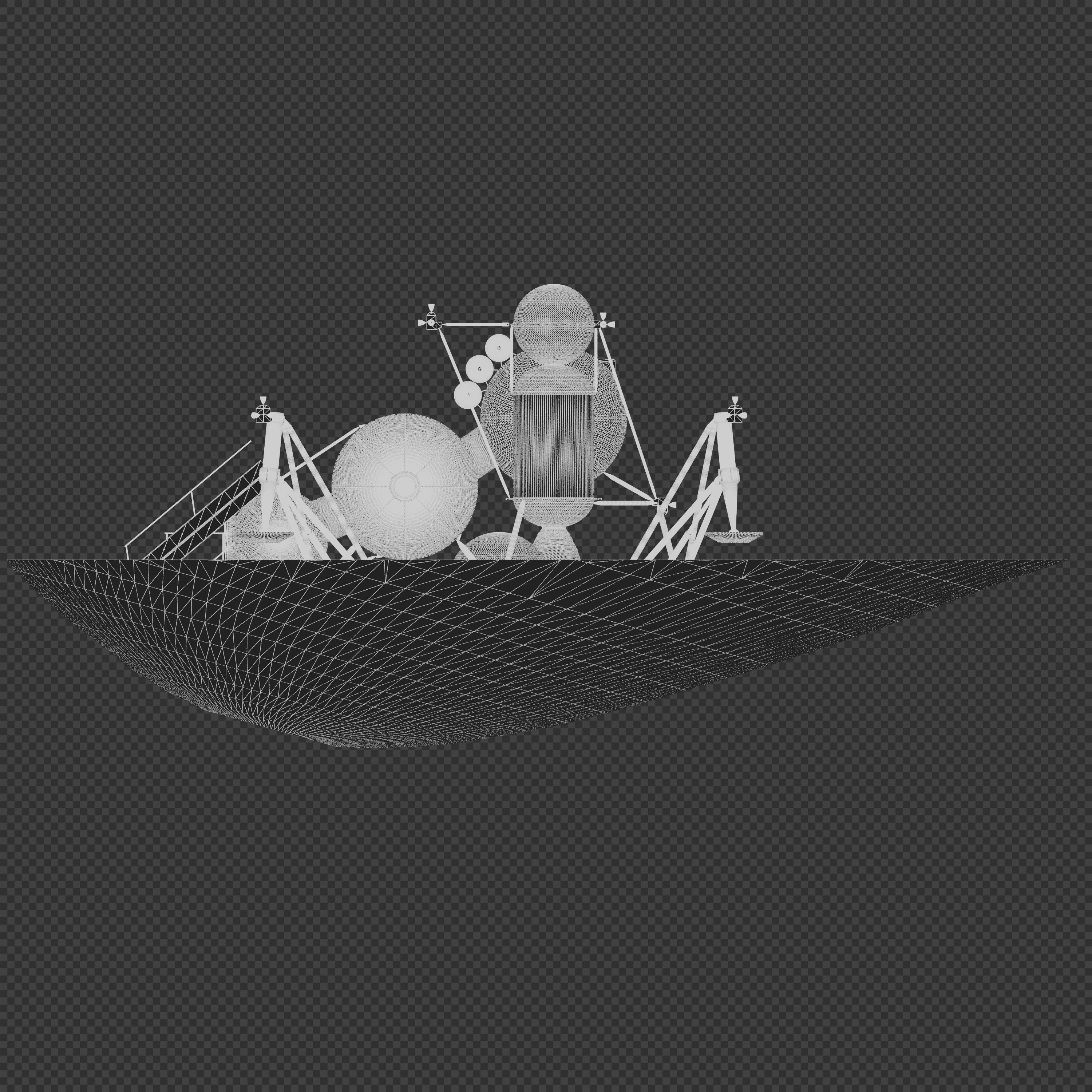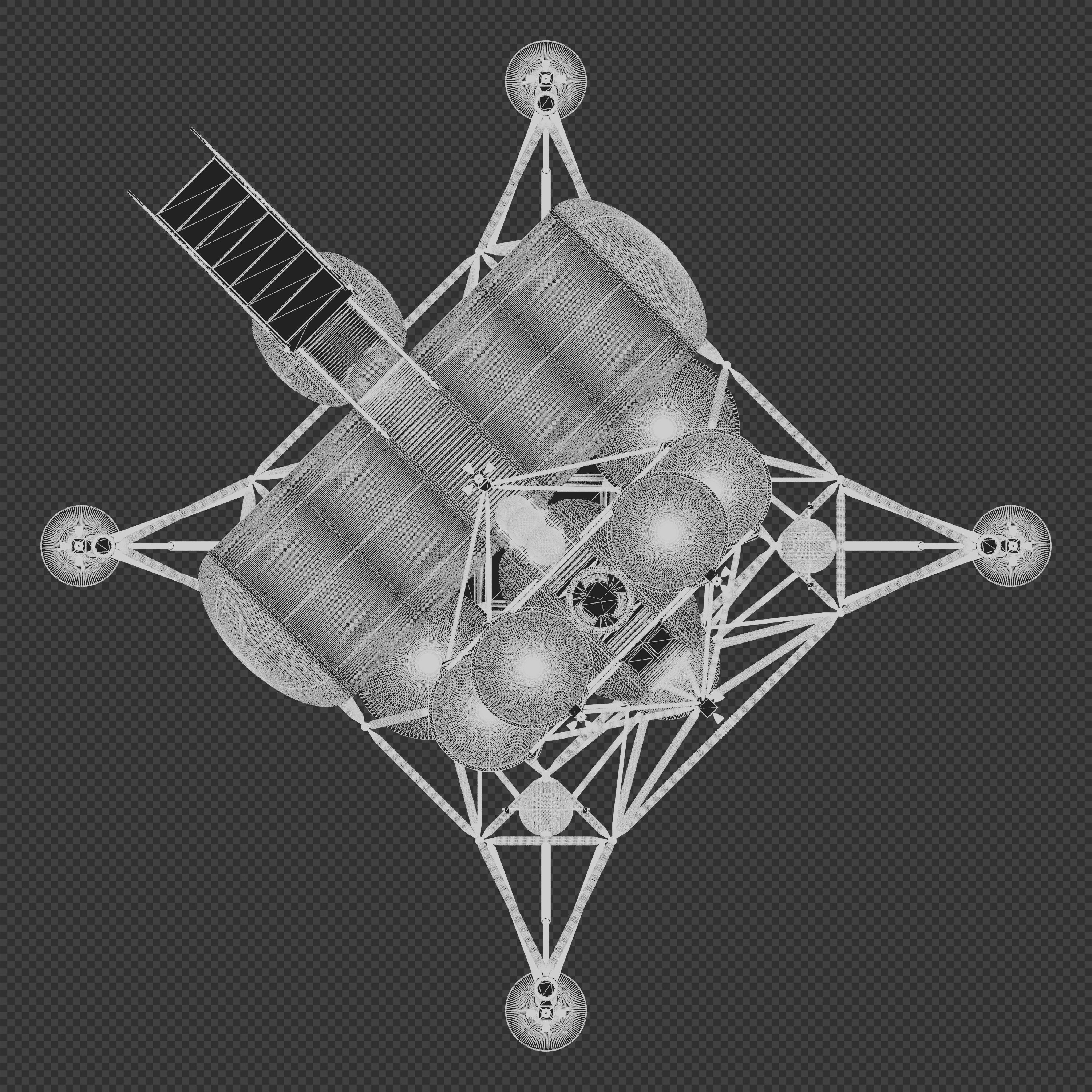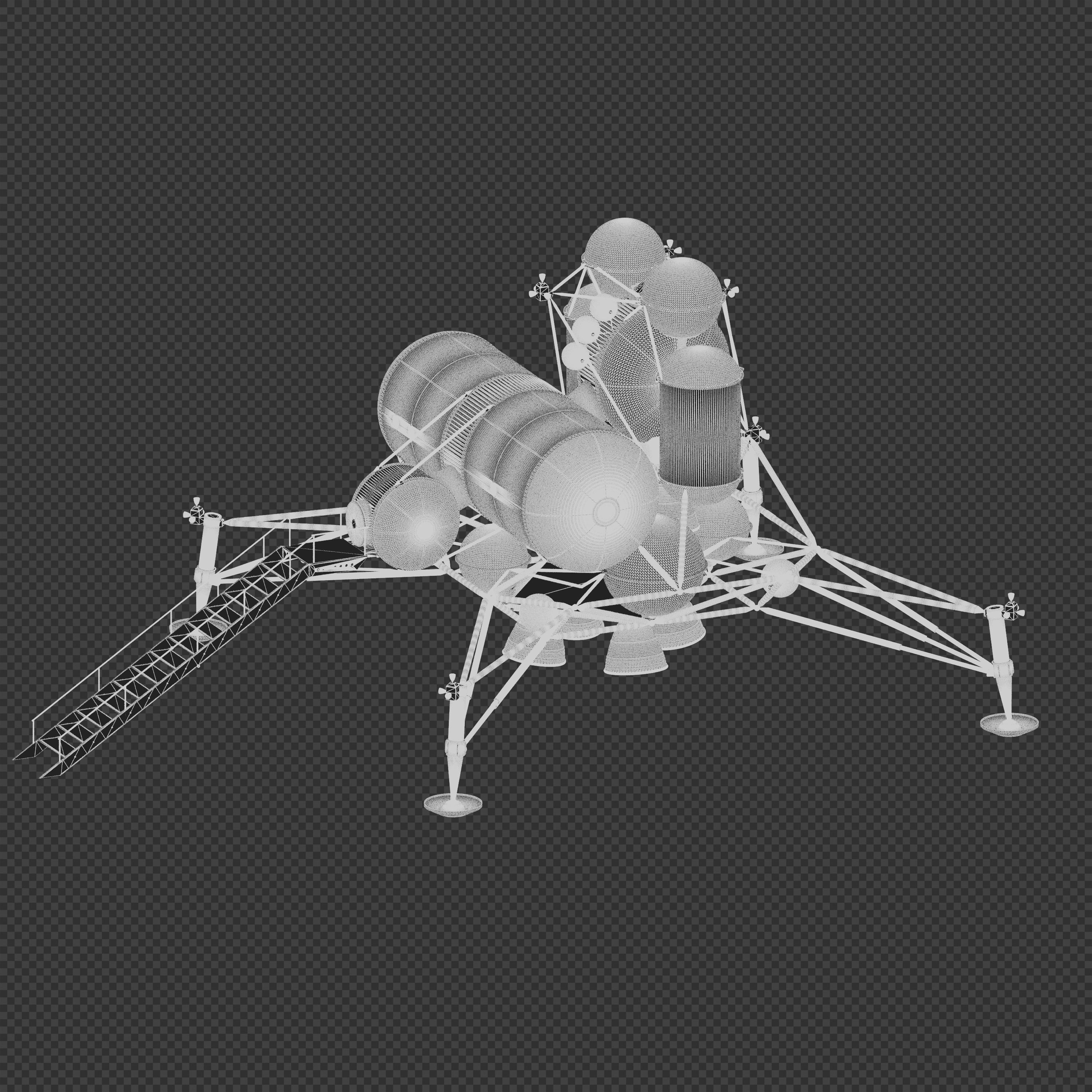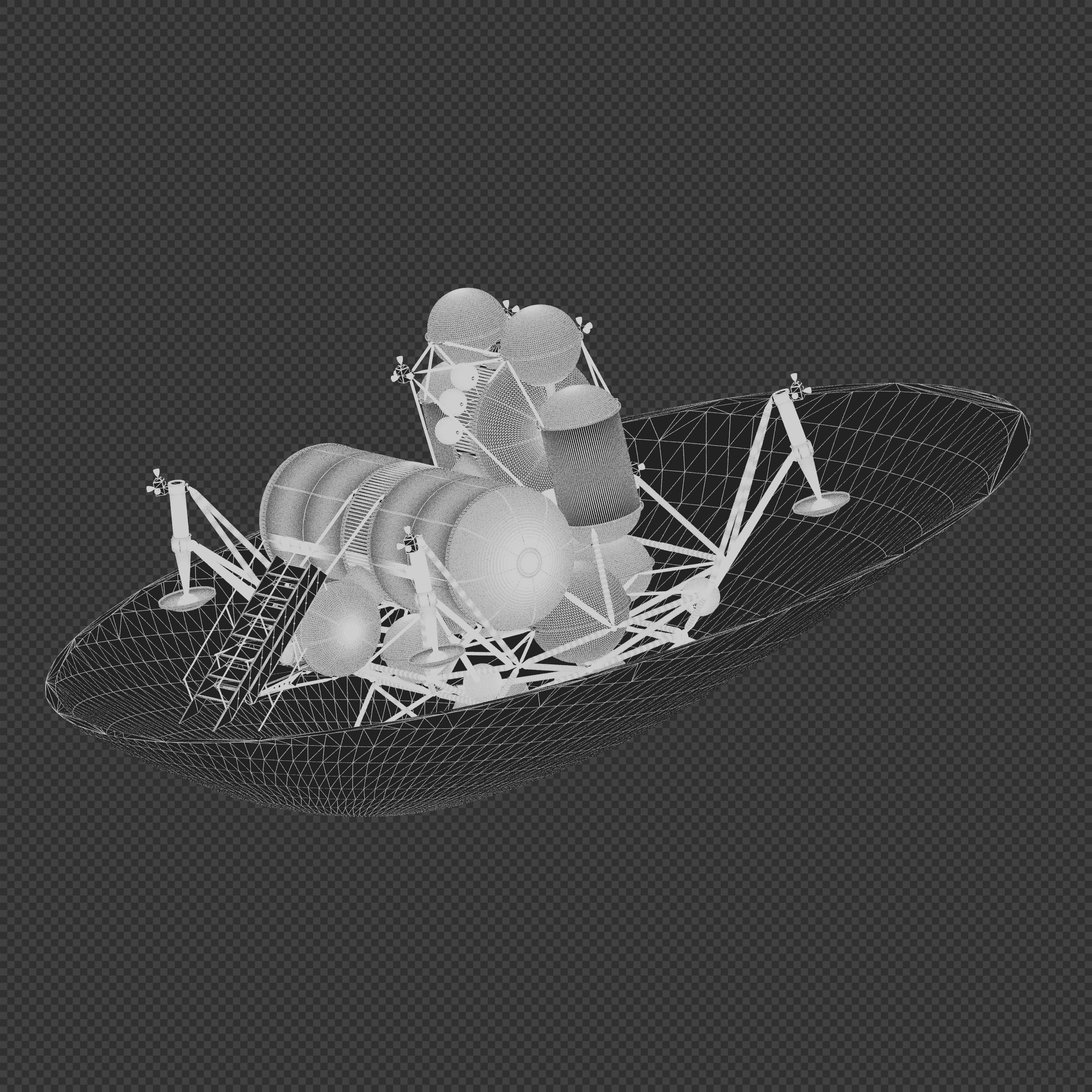
STCAEM Mars Lander 3D model
The Space Transfer Concepts and Analyses for Exploration Missions (STCAEM) study was performed in the early 1990s by Boeing, under contract from NASA as part of the broader Space Exploration Initiative. This lander, which never recieved a formal designation, was one element proposed in this study. Coupled with a large Mars Transfer Vehicle (not included), it would deliver four astronauts to the Martian surface for stays of 30 to 90 days. Components of it were to be common with Space Station Freedom, a lunar lander, and orbital transfer vehicles also proposed
The STCAEM lander consisted of five major components: The heat shield/aeroshell which would allow it to survive reentry, the descent stage, the surface habitat, the surface airlock, and the ascent stage. Separating the ascent stage cabin from surface habitation allowed the former to be much smaller.
This model is highly detailed and rigged. All modules are separable, and the landing legs and airlock stairs are deployable. Instancing, modifiers, and geometry nodes have been used to enable easy editing and reduce file size


